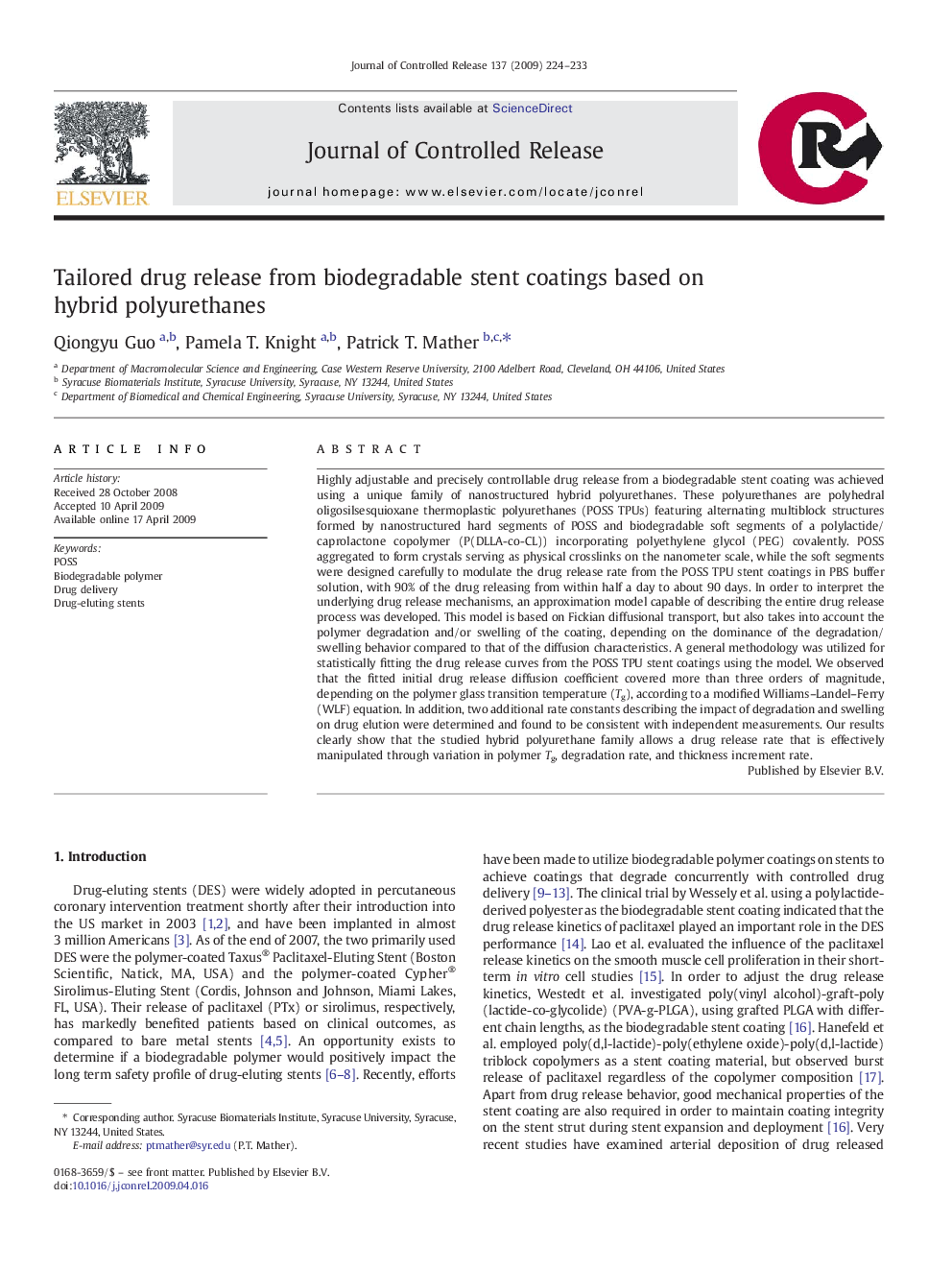| Article ID | Journal | Published Year | Pages | File Type |
|---|---|---|---|---|
| 1426123 | Journal of Controlled Release | 2009 | 10 Pages |
Highly adjustable and precisely controllable drug release from a biodegradable stent coating was achieved using a unique family of nanostructured hybrid polyurethanes. These polyurethanes are polyhedral oligosilsesquioxane thermoplastic polyurethanes (POSS TPUs) featuring alternating multiblock structures formed by nanostructured hard segments of POSS and biodegradable soft segments of a polylactide/caprolactone copolymer (P(DLLA-co-CL)) incorporating polyethylene glycol (PEG) covalently. POSS aggregated to form crystals serving as physical crosslinks on the nanometer scale, while the soft segments were designed carefully to modulate the drug release rate from the POSS TPU stent coatings in PBS buffer solution, with 90% of the drug releasing from within half a day to about 90 days. In order to interpret the underlying drug release mechanisms, an approximation model capable of describing the entire drug release process was developed. This model is based on Fickian diffusional transport, but also takes into account the polymer degradation and/or swelling of the coating, depending on the dominance of the degradation/swelling behavior compared to that of the diffusion characteristics. A general methodology was utilized for statistically fitting the drug release curves from the POSS TPU stent coatings using the model. We observed that the fitted initial drug release diffusion coefficient covered more than three orders of magnitude, depending on the polymer glass transition temperature (Tg), according to a modified Williams–Landel–Ferry (WLF) equation. In addition, two additional rate constants describing the impact of degradation and swelling on drug elution were determined and found to be consistent with independent measurements. Our results clearly show that the studied hybrid polyurethane family allows a drug release rate that is effectively manipulated through variation in polymer Tg, degradation rate, and thickness increment rate.
Graphical abstractHybrid polyurethane stent coatings afford controlled release of paclitaxel, well fit by a new model considering effects of Tg, degradation, and thickness expansion.Figure optionsDownload full-size imageDownload as PowerPoint slide
